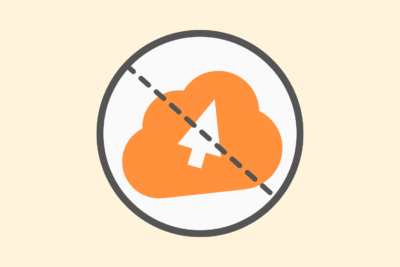Making GEO / AI SEO measurable

Generative Engine Optimization (GEO) is becoming increasingly important for organizations that want to be findable in AI-driven search systems. Examples include ChatGPT, Claude, Gemini and Perplexity. Whereas traditional SEO has clear metrics (such as rankings, clicks and conversions), GEO is less tangible. Still, it is possible to make the impact of GEO efforts measurable, provided you know where to look.
What makes GEO more difficult to measure than traditional SEO?
In classic SEO, I use tools such as Search Console, Analytics, Ahrefs or Screaming Frog to monitor performance. With these, I measure:
- Positions in search results
- Click Through Rate (CTR) in Search Console
- Sessions and conversions per page
- Backlinks and domain authority
With GEO, the playing field is different. AI systems like ChatGPT generate answers based on training data, live Web sources, or a combination of both. There is no “ranking,” no click track, and often no visible source citation. Still, there are ways to measure impact.
What I can measure at GEO
Although there are no direct SERP rankings, I focus GEO on the following metrics:
- Citations in AI-generated responses
- Visibility within new AI platforms (such as Perplexity)
- Indirect SEO impact of GEO content
- Increase in branded search or direct traffic
- Inclusion in content libraries or datasets
I take you through the practical approach for each measurement point.
1. Citations in AI systems
Some AI platforms do show their sources, and that presents opportunities to visibly measure whether your content is being used in responses. Examples:
- Perplexity.ai: show source citations below the answer
- Bing Copilot: shows website listings with some results
- Gemini (Google): page references are increasing in SGE, although this is still limited
- ChatGPT (with Browse feature): sometimes lists sources in live search queries
I recommend that you regularly ask questions in these platforms around your content topics.
Is your content being mentioned or used? If so, that’s direct visibility. Note: direct visibility requires manual testing. I document this in a set format with date, prompt used and source listed. (1)
2. Visibility in Perplexity
Perplexity is an important measurement tool for me. Not only because of source citation, but also because it shows which content forms do well in AI responses. I review:
- Which sites are regularly cited in the industry
- Which question sets are common
- Whether my content is already listed here
If my content is used repeatedly in responses, I take that as confirmation that the GEO approach used works.
3. Indirect SEO impact
Sometimes better findability in AI systems indirectly leads to more traffic. I see that from:
- Rise in branded searches: people intentionally search on my name or brand
- More direct visits by entering the URL
- Increase in returning users in Google Analytics
I see these kinds of signals as reinforcing GEO. The content itself may not be clicked directly, but people still come to me after an AI interaction.
4. Using UTM tracking in structured links
In certain cases, I have AI systems refer to URLs with UTM tags, for example through external platforms, newsletters or documentation. If I notice that these UTM links appear in AI responses, I know exactly where the traffic is coming from. This does require strategic placement of content that can be adopted by AI (for example, on forums or as a source article). (2)
5. Include content in public datasets or commonly used libraries
Some AI systems train (or retrain) on public datasets, such as Wikipedia, Stack Overflow, GitHub or scientific archives. If you are visible here, chances are your content will end up in a model.
I regularly check to see if my content or brand is mentioned in:
- Wikipedia pages
- Popular niche blogs
- Knowledge bases or academic platforms
While I can’t always measure that directly, it increases the likelihood of inclusion in future model versions.
Tools I use to monitor GEO performance
- Perplexity.ai: for citation control
- Google Search Console: to track branded search volumes and click behavior
- Poe.com: to test how different models handle content
- Analytics: to measure indirect effects such as more direct traffic or longer sessions
- Screener template in Notion: proprietary registration system of GEO findability by prompt
Summary: GEO requires different expectations
GEO is measurable, but not in the same way as classic SEO. It requires:
- Another interpretation of visibility
- More qualitative analysis of responses in AI tools
- A focus on content value, not just traffic
I see GEO as a strategic investment in authority within an AI-driven information landscape. While not everything is directly measurable, that doesn’t mean it doesn’t have an impact.
Want to know if your content is already visible in AI systems? Looking for help setting up a measurable GEO strategy? Feel free to contact me.
The impact of source citation in LLM results
Generative AI systems such as ChatGPT, Claude, Gemini and Perplexity are increasingly being used as replacements for traditional search engines. Users ask a question and immediately receive an answer. This answer is often so complete that they don’t even click through. In this new playing field, source citation plays an important role. This applies to the reliability of the answer, but also to the visibility of your website.
Discover why source citation is increasingly important in LLM results, how it works in practice, and how I structure content to stand a chance of citation.
Getting started with SEO? Feel free to get in touch.

What is source citation in LLM results?
Source citation means that an AI model explicitly references a specific website or page when providing an answer. This can be done in several ways:
- As a link under the generated answer (as with Perplexity)
- As a footnote or number (as in some Gemini results)
- As a direct citation in the text (as Claude sometimes does)
- In a separate block with ‘source: domainname.com’
Not every model does this consistently, and it varies by prompt, version and context. Still, I see this feature increasing in relevance, especially in systems that have real-time access to the Internet.
Why is source citation important?
For me, source citation in LLM results is strategically important for three reasons:
- Visibility
When AI provides immediate answers, being visible as a source is the new form of ranking. If your name or domain is below the answer, then you exist within that information landscape. Users are more likely to trust information supported by visible sources. - Authority
Citation by an AI system means that your content is recognized as qualitative, reliable and relevant. It acts as a kind of editorial recommendation: this source deserves to be read. This reinforces your status as an authority within your niche. - Click potential
Although many users read the answer directly, there are also times when they click through to the source. Especially with complex questions or when they are looking for more nuance. I see this reflected in rising direct traffic and increased branded searches.
If you use highly visible sources that exude authority and have click potential, you will be highly visible in LLM results. (3)
How do LLMs determine which source to cite?
Although the exact algorithms of models are not publicly available, in practice I see the following factors contributing to a greater likelihood of listing:
- Clear structure in the content (question and answer)
LLMs recognize and reproduce well-constructed answers more easily. I therefore ensure that each page is logically structured and answers questions as a human would. - Use of entities
By using entities (people, concepts, locations) within the context of the topic, I increase the likelihood that the model correctly categorizes and deploys the page I created. - Publication date and timeliness.
Content that is recent and contains clear dates is more likely to be used by models with access to the current Web. - Structured data
While LLMs don’t necessarily rely on schema.org structures, it does help make a page understandable to crawlers and AI systems. I provide content with Article, FAQPage and Person markup where it makes sense. - Clear author information
I explicitly show who I am, what my expertise is, and why my content is trustworthy. That suits E-E-A-T, but also helps LLMs who want to model reliability.
Which tools and models already provide source citation?
I regularly test the following platforms for citation behavior:
- Perplexity.ai
Almost always gives direct source citations with link, sometimes highlighting the exact phrase. - Gemini (formerly Bard)
For specific prompts, shows sources below the answer or as “more information” at the top. Citation is variable here, but growing. - Bing Copilot
Provides numbered references, similar to a Wikipedia-like approach. Good for immediate visibility. - ChatGPT (with Browse mode).
Specific prompts in ChatGPT-4o sometimes mention sources, although this is less consistent. - Claude
Provides sporadic direct links or mentions resource names in the text, but often without a clickable URL.
How do I optimize content for source attribution?
I always focus on the following elements:
- Write around questions users ask, not just keywords
- Cover one clear focus page per topic, no overlap
- Build authority through content, not just backlinks
- Provide external citations in sources that AI models frequently consult (Wikipedia, Quora, niche blogs)
- Republish and update your content regularly to stay relevant
In addition, I use tools such as Perplexity and Poe to verify that my content is actually cited. I manually keep a log of citations by platform so I can spot trends.
Summary
Source citation is increasingly important in the AI era. Those who want to be visible in the answer itself must ensure that their content is structurally useful to LLMs. That requires depth of content, clear structure and strategically placed information. By writing content that recognizes and trusts AI systems, you increase the chances that your name will not disappear, but rather appear as a recognized resource.
| # | Source | Publication | Retrieved | Source last verified | Source URL |
|---|---|---|---|---|---|
| 1 | New Study: AI Assistants Prefer to Cite “Fresher” Content (17 Million Citations Analyzed) (SEO Blog By Ahrefs) | 29/07/2025 | 29/07/2025 | 29/11/2025 | https://ahrefs.com/blog/.. |
| 2 | How to track visibility across AI platforms (Search Engine Land) | 14/04/2025 | 14/04/2025 | 12/11/2025 | https://searchengineland.. |
| 3 | We Studied the Impact of AI Search on SEO Traffic. Here’s What We Learned (Semrush Blog) | 09/06/2025 | 09/06/2025 | 18/11/2025 | https://www.semrush.com/.. |
- Law, R. (29/07/2025). New Study: AI Assistants Prefer to Cite “Fresher” Content (17 Million Citations Analyzed). SEO Blog By Ahrefs. Retrieved 29/07/2025, from https://ahrefs.com/blog/do-ai-assistants-prefer-to-cite-fresh-content/
- Maria Georgieva. (14/04/2025). How to track visibility across AI platforms. Search Engine Land. Retrieved 14/04/2025, from https://searchengineland.com/how-to-track-visibility-across-ai-platforms-454251
- Handley, R. (09/06/2025). We Studied the Impact of AI Search on SEO Traffic. Here’s What We Learned. Semrush Blog. Retrieved 09/06/2025, from https://www.semrush.com/blog/ai-search-seo-traffic-study/






